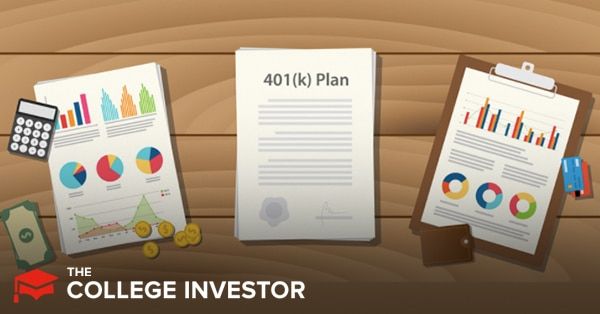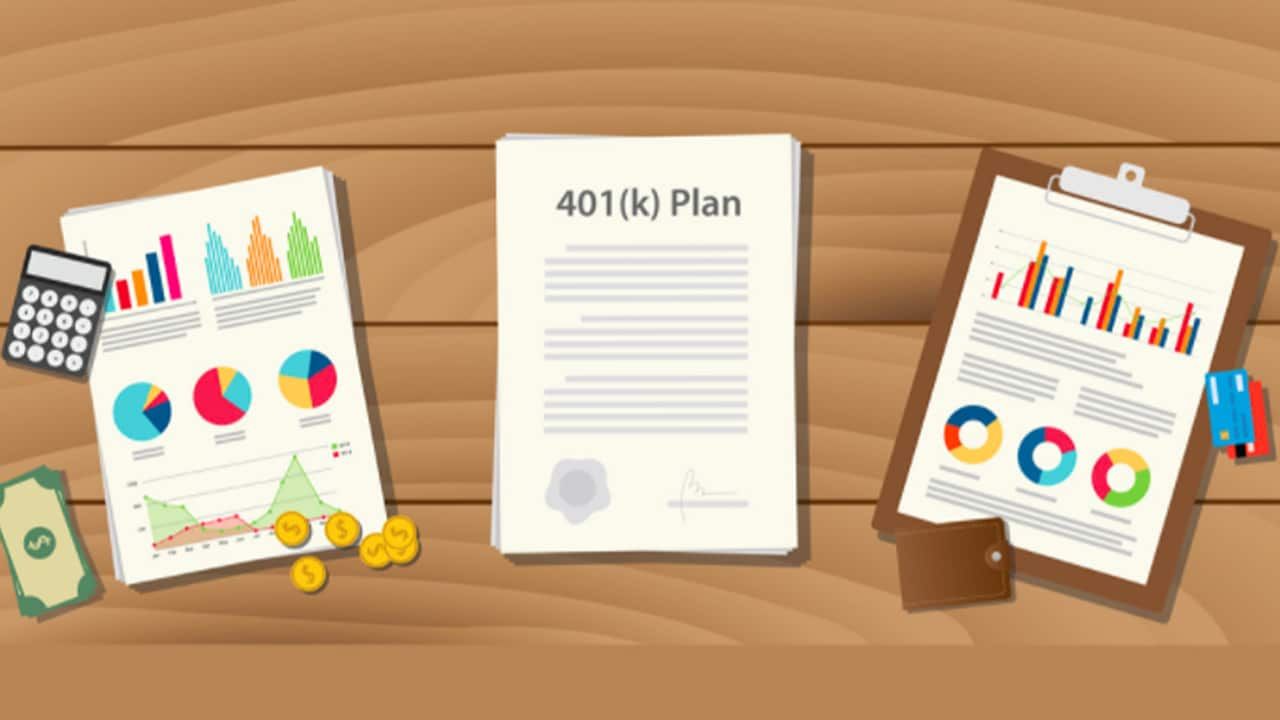
Your first day of work is a whirlwind. Meeting new people, getting your employee ID, learning your way around, figuring out where the bathroom is, and getting your computer setup are all important, but don’t forget to look over your new employee benefits packet and start a 401(k)!
Buried deep in that information that goes over insurance and other benefits, you will find the details on your 401(k) plan. In this day and age, you are responsible for your own retirement savings, and your 401(k) is a big part of it. Follow this guide to learn how to get setup on your first day so your 401(k) is on autopilot and you can save as much as possible to ensure a comfortable retirement.
How 401(k) Plans Work
401(k) plans offer employees an option to save for retirement with a tax advantaged account. Typically, both the employee and the employer will contribute to the account every pay period. Combined, the employer match and special tax rules make 401(k) accounts both popular and important for retirement savings.
401(k) contributions are made with pre-tax dollars. This means you do not pay any income taxes the year you earn the money. A single person earning $50,000 per year that contributes 6% of their pay to a 401(k) plan would save $750 per year on their taxes based on their top tax rate of 25%.
Your 401(k) dollars live in the account until you retire. Withdrawals are taxed at your regular income rate, which will presumably be lower in retirement as you won’t have a full-time income. Withdrawals before the government mandated retirement age require paying both taxes and a penalty, so plan on leaving your 401(k) contributions in your retirement account until you turn 59 ½ years old.
Review Your Benefits Packet
At large employers, your benefits packet is loaded with information on health insurance, dental insurance, vision insurance, disability insurance, life insurance, wellness programs, stock purchase plans, flexible spending accounts, health savings accounts, time off and leave policies, and company retirement plans.
Very few employers offer pension plans, so your retirement savings is in your own hands. Some universities and education focused institutions offers a 403(b), but most employers offer a 401(k), named for the IRS code that makes this type of savings plan possible.
Typically you will find information here about when you are eligible to contribute, how your employer match works, your vesting schedule, and which investments you can choose. While it may look like legal mumbo jumbo, there is important information in that section that impacts your entire retirement. In fact, half of American households have no retirement savings at all, and trusting Social Security alone is a bad strategy.
Take Full Advantage of the Company Match
The first place to look in your 401(k) information is your employer match. Employers typically match 3% to 6% of your salary, but that is contingent on your own contribution. Generally, employers match 50% or 100% of your contribution up to the salary limit. Hint: you should always contribute at least up to your employer match, your net worth depends on it.
For example, let’s look at someone who earns $50,000 per year and has a 50% match up to 3% of their annual salary. To take full advantage of the employer match, the employee must contribute 6% of their salary, or $3,000 per year, to get the full employer match of $1,500. That $1,500 is like free money from your employer, so this person should be absolutely sure they are saving enough to get that full 3% match.
Combined, that is like contributing 9%, or $4,500 per year, to their 401(k). That is likely not enough to maintain the same standard of living in retirement, but it is a great start and more than what the average person is doing. Assuming a biweekly pay schedule with 26 annual pay periods, that contribution is only $115 per payday, and that $115 has a tax advantage. Not a bad deal to get $1,500 in free money for retirement.
Related: 401(k) Plan Contribution Limits
Choose Low Cost and Diverse Investments
Now that you know the minimum you are going to save, you have to choose what to do with your savings. 401(k) plans typically offer a list of investment options for employees to choose from. The options you can choose from depend on your employer and the 401(k) administrator they choose, usually a major stock brokerage firm that offers 401(k) management as an additional service.
Your 401(k) investment options are made up of mutual funds. Mutual funds allow you to buy a group of stocks and bonds all at once rather than investing in individual stocks. This gives you a diverse portfolio instantly, which is a huge benefit.
In some cases, the best option is to put everything into a target date fund. This type of fund, also called a target retirement fund, is a “fund of funds” managed to include the best investments for someone your age. If you don’t have this option, you can choose between the other funds your employer offers. Here are some popular types of funds you may have the option to choose from.
- Broad market fund – Funds that include all stocks in an index like the S&P 500, Dow Jones Industrial Average, Russell 2000, or other major groups of stocks are a great option. In fact, Berkshire Hathaway CEO Warren Buffett, one of the most successful investors of our time, suggests the average investor put 90% of their investments into a low-cost S&P 500 index fund and 10% in a short-term government bond fund. That is not a bad plan to follow if your 401(k) allows and could lead to the best investment return.
- Domestic Stocks – Many mutual funds are focused on a sector of the stock market, like large companies, small growth companies, or a mix. These are United States based, and are generally considered more predictable and safe than foreign stocks.
- International Stocks – International stocks may fall under the same categories as domestic, but with a few more options to focus on a specific country. Funds like an international growth fund may be more risky investment options.
- Bond funds – Bond funds invest in United States government, municipal, and corporate bonds. Bonds are a form of debt that are paid back over time. Bonds are generally safer investments, but offer a lower return.
When choosing your investments, pay attention to the fees. In addition to a 401(k) account management fee, you have to pay fees charged by each mutual fund. If you see two similar investments with different fees, make sure to choose the cheaper one. Fees can eat up months or years of retirement savings, so it is important to understand the costs of each investment you choose.
Setup Automatic Increases
Some 401(k) providers give you the ability to automatically increase your percentage contribution on a periodic basis. When I had a full-time day job, I always set this increase to take place annually at the beginning of the year, just before annual reviews and raises took place.
Increasing your 401(k) contribution at the time you get a raise is a great idea for a couple of reasons. First, it helps you save more for retirement. Personal finance experts generally suggest saving at least 15% of your annual income to maintain the same quality of living in retirement, and just taking advantage of the employer match won’t get you there in most cases.
Second, automatic increases help you avoid lifestyle inflation. As you earn more, it is easy to get into a habit of spending more. But you are already used to living without that money, so putting it away for retirement before it ever touches your checking account will guarantee it goes to your future rather than a frivolous purchase today. If you automatically increase your 401(k) savings, your future self will thank you.
Understand Vesting
At some companies, you can’t keep all of your employer contributions if you decide to leave the company unless you have worked there for a minimum length of time. This is called vesting. Some employers give you 100% vesting once you reach a specific anniversary with the company, while others give you a percentage each year until you reach 100% at a specific date.
You keep all of your contributions no matter how long you worked there, but your employer match may be contingent on reaching a specific work anniversary. The best employers give you 100% of the contribution up front, but companies use vesting as an incentive to keep employees working at the company for a longer period before jumping ship to another job.
Set and Forget
Unlike active investing in the stock market, retirement accounts should be approached with a “set it and forget it” mentality. Aside from an occasional check in and rebalance, you shouldn’t tinker with your 401(k) investments. Just let your automatic contribution every payroll do its thing and you’ll be all set.
Once you're set, make sure you're tracking it. We recommend using a free tool like Empower to track your investments and net worth. Empower will automatically connect with your 401k plan so you can track your performance and investments with ease. Try it for free here.
The worst thing you can do is ignore your 401(k) or retirement savings, which is not uncommon today. But don’t be like the average person who will struggle when the reach their golden years. Instead, put in the time on your first day of work to setup your 401k to ensure you have a great future ahead!

Eric Rosenberg is a financial writer, speaker, and consultant based in Ventura, California. He holds an undergraduate finance degree from the University of Colorado and an MBA in finance from the University of Denver. After working as a bank manager and then nearly a decade in corporate finance and accounting, Eric left the corporate world for full-time online self-employment.
His work has been featured in online publications including Business Insider, Nerdwallet, Investopedia, The Balance, Huffington Post, and other financial publications. When away from the computer, he enjoys spending time with his wife and three children, traveling the world, and tinkering with technology. Connect with him and learn more at EricRosenberg.com.
Editor: Clint Proctor Reviewed by: Chris Muller
